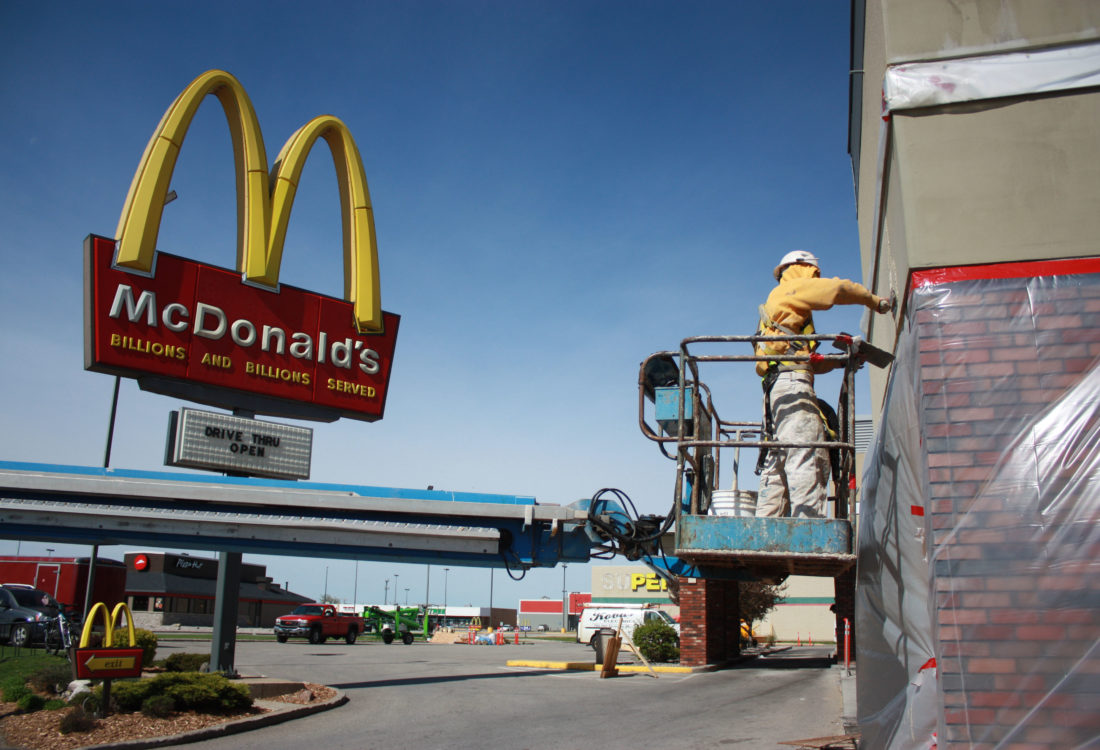Why Is Restaurant CapEx Spending Assistance To Franchisees On The Upswing?

Some interesting developments in restaurant franchising are becoming a reality even in the “asset light" restaurant space. It turns out that it does take money to make money in the future.
The requirement for franchisee capital spending (CAPEX)—the big-ticket construction, equipment and information technology outlays—is often underestimated and almost always under reported. These outlays traditionally have been the franchisee’s responsibility. A few chains, like McDonald’s (MCD) and Tim Horton’s (THI) Canada, kept real estate and construction in house and initially corporately funded it, with franchisor cost recovery occurring over time by the franchisee paying at or above market rents. Later, the McDonald's franchisee must pay for remodels, as well as the more costly total rebuilds or relocated units. Typically the franchisee remains responsible to pay for all future remodel and maintenance CAPEX outlays. But this is relatively rare, mostly the franchisee funded the capital spending via friends and family, bank debt, partners and injected cash. That was doable by some, especially after the Great Recession as interest rates remained very low.
This “franchisee sole responsibility to fund” reality has begun to change in some brands over the last few years out of necessity.
First, as the utility and success of technology backed loyalty, delivery and digital interfaces have been pioneered by Panera (PNRA) , Starbucks (SBUX) and Dominos (DPZ), the digital level of complexity has been raised. Restaurant franchisors have come to understand that an IT backbone would have to be built and maintained centrally by brand headquarters.[1] It would have been unworkable for there to be thousands of servers among a brand’s franchisee units all maintained separately—the cost to implement would have been impossibly expensive and many of the systems would be built differently and likely couldn’t talk to one another.
Another issue: the level of capital expenditures necessary to remodel restaurants and add new brand mandated systems and equipment has become big numbers. Our calculations show that depreciation expense—the typical proxy for capital spending that is a tax deduction and a non cash expense—isn’t enough to provide a fund. The actual outlay of cash required is greater than that. Even if restricted cash is available to pay for future remodels and upgrades, the effect of inflation on construction and equipment would require even more funds than were originally earmarked to get the same purchasing power. Keep in mind that most franchisees have a store development agreement in place, whereby building new stores or purchasing new stores competes for funding with remodels. Bank debt can partially suffice unless lending covenants are already stretched.
Finally, franchisees are typically in 'wait and see' mode on remodels and new sales platforms until the franchisor executes it themselves and proves that it works. That builds in delays--time of implementation lags. If the franchisor has company stores (some do not, such as Dunkin Brands (DNKN) and Subway, for example), it takes time for brands to get proof to market and get the franchisees on board. This has happened with all of the leading franchisors—McDonald’s, Wendy’s (WEN), Burger King (QSR), Sonic (SONC) and many others.
As a result, some franchisors have taken the lead in making co-capital investments with franchisees to jump start future progress. A partial list follows:
- Since McDonald's (MCD) owns most of its real estate, it can justify partially funding franchisee costs. This occurred in 2008/2009, with the McCafe co-investments (about $150K per store), and then in 2016/2017 with its Experience of the Future Investment (about $6 billion in total franchisor/franchisee investment over 2018-2020, with the franchisor funding about 55% of that.[2]
- Via its parent YUM Brands (YUM), Pizza Hut made a basket of investments in 2017 ($130M)[3]and 2018 ($200M)[4] to enhance restaurant operations, marketing and remodeling. This was done to ease the burden on franchisees and to ensure improvements were implemented more quickly.
- Dunkin Brands (DNKN) recently set aside about $65M for CAPEX and equipment to help fund test store’s expansion to its Next Generation store types.[5]
There are several actions required of both franchisors and franchisees to make these business issues work for all.
First, the franchisor must take the lead to timely source and test lower cost remodels and new store footprints. They are the brand steward and are responsible contractually to define brand standards. Many franchisors are slow to prioritize this, often prioritizing central national marketing expense, share buybacks and debt service requirements. The size, look and location of the remodeled restaurant is critical. A capital investment such as building and locating a new store is costly. If the wrong site is picked, it is almost impossible to reverse the effect of that missed opportunity"
Additionally, better scorekeeping is necessary. Much greater visibility to fully loaded (i.e., with capital spending and debt costs fully allocated) franchise store economics is required. Some franchisees don’t report their capital spending and capital spending data; some franchisors are afraid to know and pretend they don’t have that data. Tracking EBITDAR or EBITDA is of only so much use if the CAPEX and debt service costs can’t be seen.
Finally, franchisees need to ask and document their needs and wants in an organized way. Through either franchisee associations or via brand advisory councils, organized requests and backup needs to be presented. There is strength in numbers—some franchisors prefer to deal with individual franchisees head to head to avoid group pressure.
[1]Some franchise brands have implemented a small fee on loyalty and digital transactions sales to fund this outlay. Dominos and Subway are examples.
[2]Investor’s Business Daily, Q4 MCD Earnings call discussion, January 30 2018
[3]Nation’s Restaurant News, May 3 2017. In 2015, YUM noted it invested $180M for KFC requirements.
[4]https://investors.grubhub.com, February 8 2018.
[5]Restaurant Business Online, July 28 2018
Disclosure: The author has no positions in any stocks mentioned.



